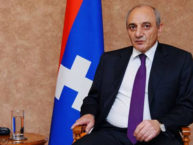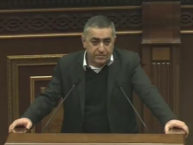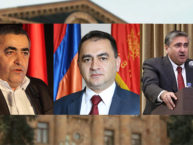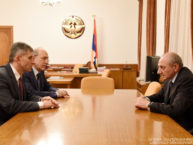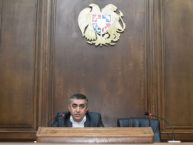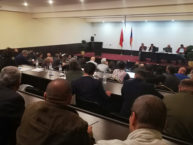ARF NEWS, May 1996, Volume 1.3 (3)
The ARF’s relations with the Socialist International go back as far when the ARF initiated the propagation of the Armenian Question in the European circles, that is, around the mid 1890’s.
In 1896, ARF-Dashnaktsutyun’s Western Bureau1 forwarded to the Socialist International its first report-memorandum expounding the organization’s structure, ideological principles and activities. It should be noted that the ARF was founded 1890, a year after the establishment of the Socialist International.
The campaign for “European Propaganda” by Kristapor Mikayelian2, organized in 1900, intensified the rapport and cooperation between the Socialist International and the ARF.
In 1907, the ARF Fourth World Congress submitted, along with the new party program, an application of membership to the Socialist International Bureau in Brussels. The same year, the ARF Eastern Bureau3 region participated in the Socialist Congress of Stuttgart as a member of the Pan-Russian section, and presented a report on the ARF’s activities since its founding.
The Stuttgart Congress avoided the creation of a separate Armenian section, and instead provided for the participation of the ARF within the Pan-Russian section. At the same Congress, the ARF Western region’s participation was also raised and a decision was postponed.
Later that year, the International’s Bureau decided, that instead of a separate Armenian section within the International, the ARF would act as the representative of the Transcaucasian (Eastern) Armenian national section, at the same time it would also become the representative of the Western Armenian subsection.
ARF NEWS, March-April 1996, Volume 1.2 (2)
After the First World War and the end of the Armenian Independence (1918-1920), the ARF carried out its active participation in the S.I. In the mean time, as an exiled Socialist party it maintained an active clandestine organisation within Soviet Armenia, where due to the Stalinist persecution all party activities were ceased in 1930 and the party organization was dissolved. Waiting for better circumstances, the ARF limited its activities in organising the survival and the cultural and political education of the Armenian masses dispersed by the Genocide of 1915. In 1965, for unclear reasons and with an unclear procedure, the ARF’s participation in SI ceased. Since then and particularly after the 1970’s the ARF has made every effort to regain its membership rights, as a recognised fraternal party, therefore attending meetings and the Congress. The main obstacle to its requests apparently had been the opinion that its status of “exiled socialist party” made its membership temporarily impossible.
The changes in the political situation of the Soviet Union, made it possible for the ARF to reorganise itself in Armenia in 1990. Until December 28, 1994, when it was “temporarily suspended” by the Armenian authorities, the ARF was inarguably considered to be the main opposition party in Armenia, with a nationwide organization and a popular press. Until its illegal shutdown and seizure, the ARF daily “Yerkir” had the largest circulation in Armenia.
The persecution against the ARF in Armenia has only strenghtened the resolve of its ranks to relentlessly pursue their main objective of presenting to the Armenian electorate the alternative of democratic order and social justice. In its campaign toward that goal, the oldest existing socialist party in the Transcaucasus, the ARF, needs the support of its fraternal parties in the Socialist International. The reinstatement of the ARF’s full membership in the Socialist International would be the most positive step in that direction. A direction which is in accordance with the recent changes and challenges faced by the Socialist International, following the re-emergence of the independent states of Eastern Europe and the Transcaucasus.
1 Responsible for the ARF organization in the Ottoman Empire.
2 One of the main founders of the ARF
3 Responsible for the ARF organization in the Transcaucasus.


